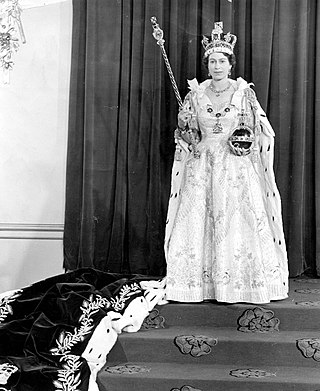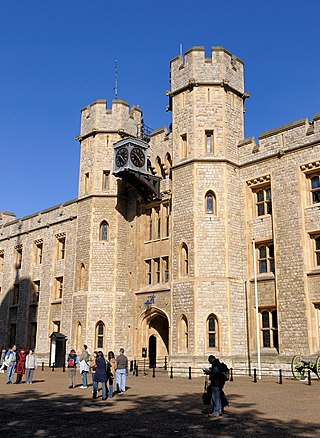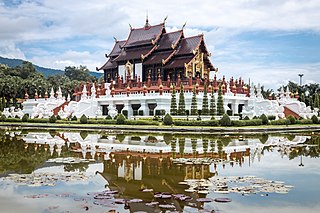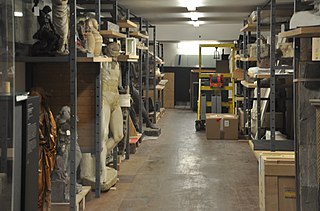
The Department of the Treasury (USDT) is the national treasury and finance department of the federal government of the United States, where it serves as an executive department. The department oversees the Bureau of Engraving and Printing and the U.S. Mint. These two agencies are responsible for printing all paper currency and minting coins, while the treasury executes currency circulation in the domestic fiscal system. The USDT collects all federal taxes through the Internal Revenue Service; manages U.S. government debt instruments; licenses and supervises banks and thrift institutions; and advises the legislative and executive branches on matters of fiscal policy. The department is administered by the secretary of the treasury, who is a member of the Cabinet. The treasurer of the United States has limited statutory duties, but advises the Secretary on various matters such as coinage and currency production. Signatures of both officials appear on all Federal Reserve notes.

Crown jewels are the objects of metalwork and jewellery in the regalia of a current or former monarchy. They are often used for the coronation of a monarch and a few other ceremonial occasions. A monarch may often be shown wearing them in portraits, as they symbolize the power and continuity of the monarchy. Additions to them may be made, but since medieval times the existing items are typically passed down unchanged as they symbolize the continuity of the monarchy.

The Emerald Buddha is an image of the meditating Gautama Buddha seated in a meditative posture, made of a semi-precious green stone, clothed in gold. and about 66 centimetres (26 in) tall. The image is considered the sacred palladium of Thailand. It is housed in the Temple of the Emerald Buddha on the grounds of the Grand Palace in Bangkok.

Chiang Mai, sometimes written as Chiengmai or Chiangmai, is the largest city in northern Thailand, the capital of Chiang Mai province and the second largest city in Thailand. It is 700 km (435 mi) north of Bangkok in a mountainous region called the Thai highlands and has a population of 1.2 million people as of 2022, which is more than 66 percent of the total population of Chiang Mai province.

A treasurer is a person responsible for the financial operations of a government, business, or other organization.

Phayao is one of Thailand's seventy-seven provinces (changwat) lies in upper northern Thailand. Neighboring provinces are Nan, Phrae, Lampang, and Chiang Rai. In the northeast it borders Xaignabouli of Laos.

The Grand Palace is a complex of buildings at the heart of Bangkok, Thailand. The palace has been the official residence of the Kings of Siam since 1782. The king, his court, and his royal government were based on the grounds of the palace until 1925. King Bhumibol Adulyadej, resided at the Chitralada Royal Villa and his successor King Vajiralongkorn at the Amphorn Sathan Residential Hall, both in the Dusit Palace, but the Grand Palace is still used for official events. Several royal ceremonies and state functions are held within the walls of the palace every year. The palace is one of the most popular tourist attractions in Thailand, with over 8 million people visiting each year.

Regalia is the set of emblems, symbols, or paraphernalia indicative of royal status, as well as rights, prerogatives and privileges enjoyed by a sovereign, regardless of title. The word originally referred to the elaborate formal dress and accessories of a sovereign, but now it also refers to any type of elaborate formal dress. The word stems from the Latin substantivation of the adjective regalis, "regal", itself from rex, "king". It is sometimes used in the singular, regale.


The Royal Flora Ratchaphruek was an international horticultural exposition held 1 November, 2006 to 31 January, 2007 at Queen Sirikit Botanic Garden in the Thai city Chiang Mai of Chiang Mai Province that drew 3,781,624 visitors. Recognised by the Bureau International des Expositions (BIE), it was one of the grand celebrations hosted by the Royal Thai Government in honor of King Bhumibol, the world's longest reigning monarch.

The National Museum of Indonesia is an archeological, historical, ethnological, and geographical museum located in Jalan Medan Merdeka Barat, Central Jakarta, right on the west side of Merdeka Square. Popularly known as the Elephant Museum after the elephant statue in its forecourt, its broad collections cover all of Indonesia's territory and almost all of its history. The museum has endeavoured to preserve Indonesia's heritage for two centuries.

The Bangkok National Museum is the main branch museum of the National Museums in Thailand and also one of the largest museums in Southeast Asia. It features exhibits of Thai art and history. It occupies the former palace of the vice king, set between Thammasat University and the National Theater, facing Sanam Luang.

The Museum of Byzantine Culture is a museum in Thessaloniki, Central Macedonia, Greece, which opened in 1994.

The Economy Museum - Royal Coin Cabinet is a museum in central Stockholm, Sweden, dedicated to the history of money and economic history in general.
Bangkok, the capital of Thailand, is one of the world's top tourist destination cities. Each year, approximately 22.7 million international visitors arrive in Bangkok. MasterCard ranked Bangkok as the world's top destination city, with 15.98 million projected visitors in 2013. It topped the MasterCard Global Destinations Cities Index as the most visited city in the world in 2012, 2013, 2016, 2017 and 2018. The city is ranked fourth in cross-border spending, with 14.3 billion dollars projected for 2013, after New York, London and Paris. Euromonitor International ranked Bangkok sixth in its Top City Destinations Ranking for 2011. Bangkok has also been named "World's Best City" by Travel + Leisure magazine's survey of its readers for four consecutive years since 2010.

The Bureau of Royal Thai Mint,, is situated in Pathum Thani, Thailand. It is a sub-division of the Treasury Department, Ministry of Finance.
The Pavilion of Regalia, Royal Decorations and Coins is a museum showcasing regalia, royal Thai decorations of the early period, historical Thai money and ornaments used in the royal courts. It is under the supervision of the Bureau of Grand National Treasure, the Treasury Department which has the responsibility to safeguard, conserve, and display national treasures.
In Thailand, Grand National Treasure refers to objects that, in the past, were made by the national purse and bestowed by the King to Royal Family members, courtiers, and high-ranking officials. The national treasure also includes items that are valuable in terms of history and Thai artistic features.

A collection manager ensures the proper care and preservation of objects within cultural institutions such as museums, libraries, and archives. Collection managers, along with registrars, curators, and conservators, play an important role in collections care. Collection Managers and Registrars are two distinct collection roles that are often combined into one within small to mid-size cultural institutions. Collection Managers can be found in large museums and those with a history and natural history focus whose diverse collections require experienced assessment to properly sort, catalog, and store artifacts. A collection manager may oversee the registrar, archivist, curator, photographer, or other collection professionals, and may assume the responsibilities of these roles in their absence within an organization.
The coronation of the monarch of Thailand is a ceremony in which they are formally consecrated by anointment and crowning. The ceremony is divided into two main events: the coronation rites and the celebration of the Assumption of the Residence. The coronation rites are a blend of Hindu and Buddhist traditions dating back several centuries. The rites included the purification bath of the king, the anointing of the king, the crowning of the king, and the investiture of the royal regalia, the royal utensils, and the royal weapons of sovereignty. The Assumption of the Residence is a private housewarming celebration by members of the royal family at the Grand Palace.